�
Copyright
Biographies
Frank Mittelbach
Michel Goossens
Johannes Braams
David Carlisle
Chris Rowley
Christine Detig & Joachim Schrod
Addison-Wesley Series on Tools and Techniques for Computer Typesetting
List of Figures
List of Tables
Preface
Chapter 1. Introduction
Section 1.1. A brief history
Section 1.2. Today's system
Section 1.3. Working with this book
Chapter 2. The Structure of a LATEX Document
Section 2.1. The structure of a source file
Section 2.2. Sectioning commands
Section 2.3. Table of contents structures
Section 2.4. Managing references
Chapter 3. Basic Formatting Tools
Section 3.1. Phrases and paragraphs
Section 3.2. Footnotes, endnotes, and marginals
Section 3.3. List structures
Section 3.4. Simulating typed text
Section 3.5. Lines and columns
Chapter 4. The Layout of the Page
Section 4.1. Geometrical dimensions of the layout
Section 4.2. Changing the layout
Section 4.3. Dynamic page data: page numbers and marks
Section 4.4. Page styles
Section 4.5. Visual formatting
Section 4.6. Doing layout with class
Chapter 5. Tabular Material
Section 5.1. Standard LATEX environments
Section 5.2. array—Extending the tabular environments
Section 5.3. Calculating column widths
Section 5.4. Multipage tabular material
Section 5.5. Color in tables
Section 5.6. Customizing table rules and spacing
Section 5.7. Further extensions
Section 5.8. Footnotes in tabular material
Section 5.9. Applications
Chapter 6. Mastering Floats
Section 6.1. Understanding float parameters
Section 6.2. Float placement control
Section 6.3. Extensions to LATEX's float concept
Section 6.4. Inline floats
Section 6.5. Controlling the float caption
Chapter 7. Fonts and Encodings
2
Section 7.1. Introduction
Section 7.2. Understanding font characteristics
Section 7.3. Using fonts in text
Section 7.4. Using fonts in math
Section 7.5. Standard LATEX font support
Section 7.6. PSNFSS—PostScript fonts with LATEX
Section 7.7. A collection of font packages
Section 7.8. The LATEX world of symbols
Section 7.9. The low-level interface
Section 7.10. Setting up new fonts
Section 7.11. LATEX's encoding models
Section 7.12. Compatibility packages for very old documents
Chapter 8. Higher Mathematics
Section 8.1. Introduction to AMS-LATEX
Section 8.2. Display and alignment structures for equations
Section 8.3. Matrix-like environments
Section 8.4. Compound structures and decorations
Section 8.5. Variable symbol commands
Section 8.6. Words in mathematics
Section 8.7. Fine-tuning the mathematical layout
Section 8.8. Fonts in formulas
Section 8.9. Symbols in formulas
Chapter 9. LATEX in a Multilingual Environment
Section 9.1. TEX and non-English languages
Section 9.2. The babel user interface
Section 9.3. User commands provided by language options
Section 9.4. Support for non-Latin alphabets
Section 9.5. Tailoring babel
Section 9.6. Other approaches
Chapter 10. Graphics Generation and Manipulation
Section 10.1. Producing portable graphics and ornaments
Section 10.2. LATEX's device-dependent graphics support
Section 10.3. Manipulating graphical objects in LATEX
Section 10.4. Display languages: PostScript, PDF, and SVG
Chapter 11. Index Generation
Section 11.1. Syntax of the index entries
Section 11.2. makeindex—A program to format and sort indexes
Section 11.3. xindy—An alternative to MakeIndex
Section 11.4. Enhancing the index with LATEX features
Chapter 12. Managing Citations
Section 12.1. Introduction
Section 12.2. The number-only system
Section 12.3. The author-date system
Section 12.4. The author-number system
Section 12.5. The short-title system
Section 12.6. Multiple bibliographies in one document
Chapter 13. Bibliography Generation
Section 13.1. The BIBTEX program and some variants
Section 13.2. The BIBTEX database format
Section 13.3. On-line bibliographies
Section 13.4. Bibliography database management tools
3�
Section 13.5. Formatting the bibliography with BIBTEX styles
Section 13.6. The BIBTEX style language
Chapter 14. LATEX Package Documentation Tools
Section 14.1. doc—Documenting LATEX and other code
Section 14.2. docstrip.tex—Producing ready-to-run code
Section 14.2.1. Invocation of the DOCSTRIP utility
Section 14.2.2. DOCSTRIP script commands
Section 14.2.3. Installation support and configuration
Section 14.2.4. Using DOCSTRIP with other languages
Section 14.3. ltxdoc—A simple LATEX documentation class
Section 14.4. Making use of version control tools
Appendix A. A LATEX Overview for Preamble, Package, and Class Writers
Section A.1. Linking markup and formatting
Section A.2. Page markup—Boxes and rules
Section A.3. Control structure extensions
Section A.4. Package and class file structure
Appendix B. Tracing and Resolving Problems
Section B.1. Error messages
Section B.2. Warnings and informational messages
Section B.3. TEX and LATEX commands for tracing
Appendix C. LATEX Software and User Group Information
Section C.1. Getting help
Section C.2. How to get those TEX files?
Section C.3. Using CTAN
Section C.4. Finding the documentation on your TEX system
Section C.5. TEX user groups
Appendix D. TLC2 TEX CD
Origins—The TEX Live system
Installing LATEX from the CD-ROM
Running LATEX directly from the CD-ROM
The LATEX Companion example documents
Licenses
Bibliography
4�
Copyright
and contributions by Christine Detig and Joachim Schrod
Many of the designations used by manufacturers and sellers to distinguish their products are claimed as
trademarks. Where those designations appear in this book, and Addison-Wesley was aware of a trademark
claim, the designations have been printed with initial capital letters or in all capitals.
The authors and publisher have taken care in the preparation of this book, but make no expressed or
implied warranty of any kind and assume no responsibility for errors or omissions. No liability is assumed
for incidental or consequential damages in connection with or arising out of the use of the information or
programs contained herein.
The publisher offers discounts on this book when ordered in quantity for bulk purchases and special sales.
For more information, please contact:
U.S. Corporate and Government Sales
(800) 382-3419
corpsales@pearsontechgroup.com
For sales outside of the U.S., please contact:
International Sales
(317) 581-3793
international@pearsontechgroup.com
Visit Addison-Wesley on the Web: www.awprofessional.com
Library of Congress Cataloging-in-Publication Data
Mittelbach, Frank.
The LaTeX Companion.– 2nd ed. / Frank Mittelbach and Michel Goossens,
with Johannes Braams, David Carlisle, and Chris Rowley.
p. cm.
Goossens' name appears first on the earlier edition.
Includes bibliographical references and index.
ISBN 0-201-36299-6 (pbk. : alk. paper)
1. LaTeX (Computer file) 2. Computerized typesetting. I. Goossens,
Michel. II. Rowley, Chris, 1948- III. Title.
Z253.4.L38G66 2004
686.2'2544536-dc22
2003070810
Copyright © 2004 by Pearson Education, Inc.
All rights reserved. No part of this publication may be reproduced, stored in a retrieval system, or
transmitted, in any form, or by any means, electronic, mechanical, photocopying, recording, or otherwise,
5�
without the prior consent of the publisher. Printed in the United States of America. Published
simultaneously in Canada.
For information on obtaining permission for use of material from this work, please submit a written
request to:
Pearson Education, Inc.
Rights and Contracts Department
75 Arlington Street, Suite 300
Boston, MA 02116
Fax: (617) 848-7047
Text printed on recycled paper
1 2 3 4 5 6 7 8 9 10—CRW—0807060504
First printing, April 2004
Dedication
We dedicate this book to the memory of Michael Downes (1958–2003), a great friend and wonderful
colleague on the LATEX Team. His thoughtful contributions to our work and our lives are diverse and
profound. Moreover, he brightens the lives of countless grateful (LA)TEX users through the wisdom built
6�
into his support for all aspects of mathematical typesetting—very many masterpieces of the publishing art
will stand for ever as superb memorials to his quiet but deep insights.
7�
Biographies
Frank Mittelbach
Michel Goossens
Johannes Braams
David Carlisle
Chris Rowley
Christine Detig & Joachim Schrod
8�
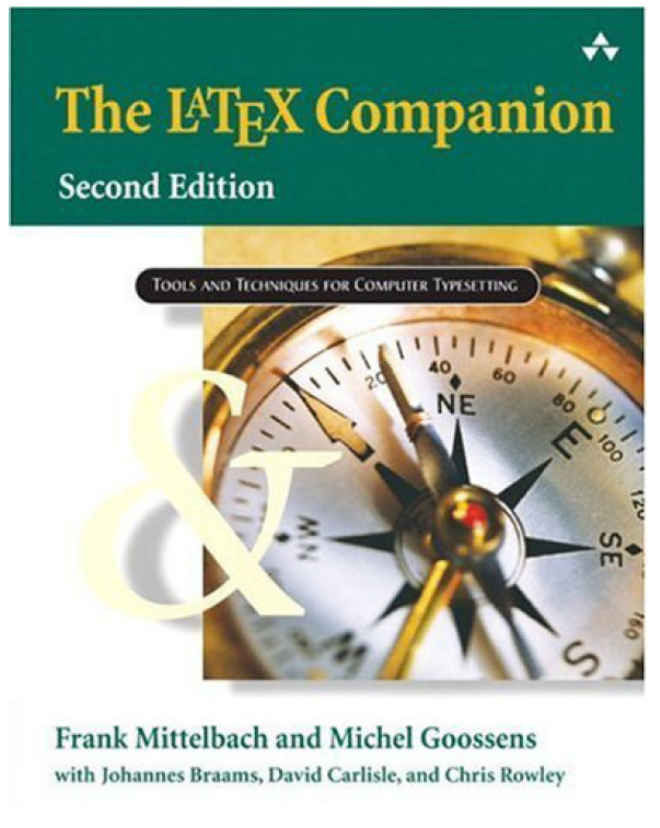
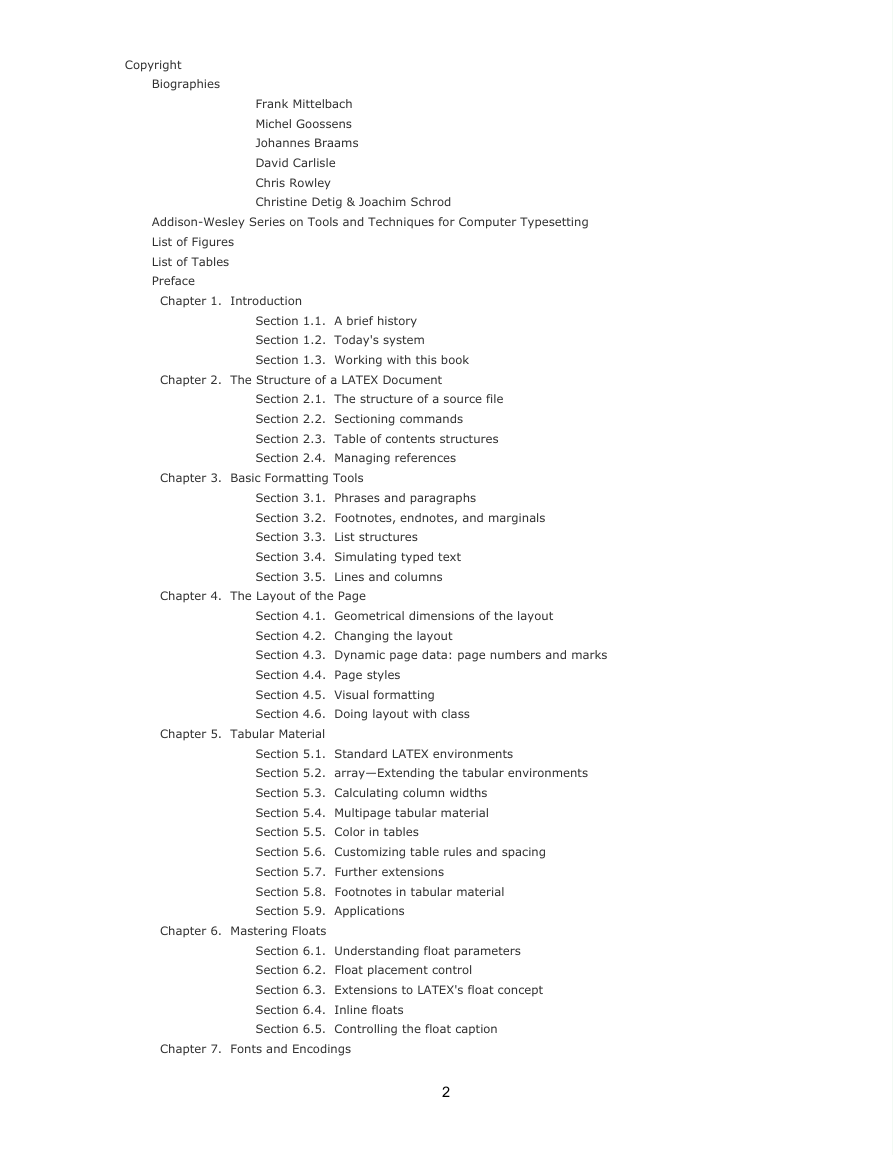
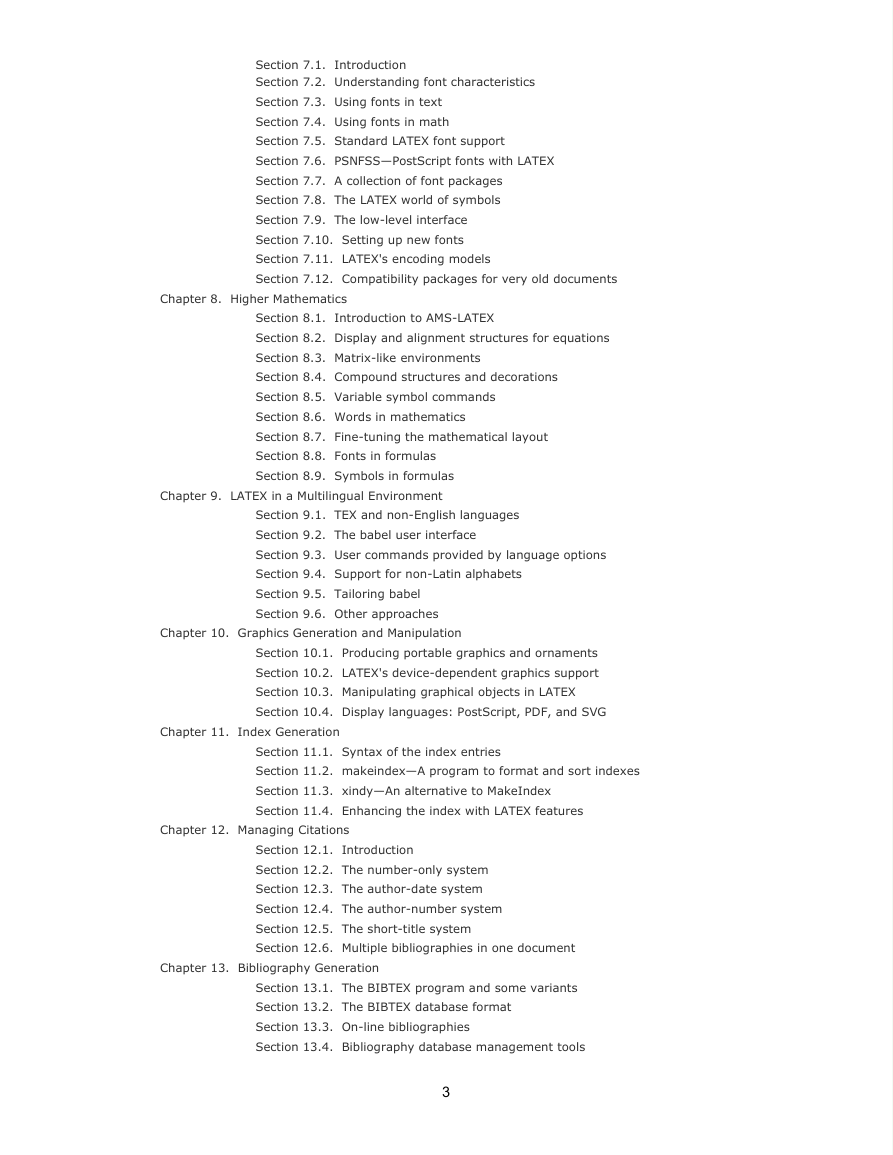
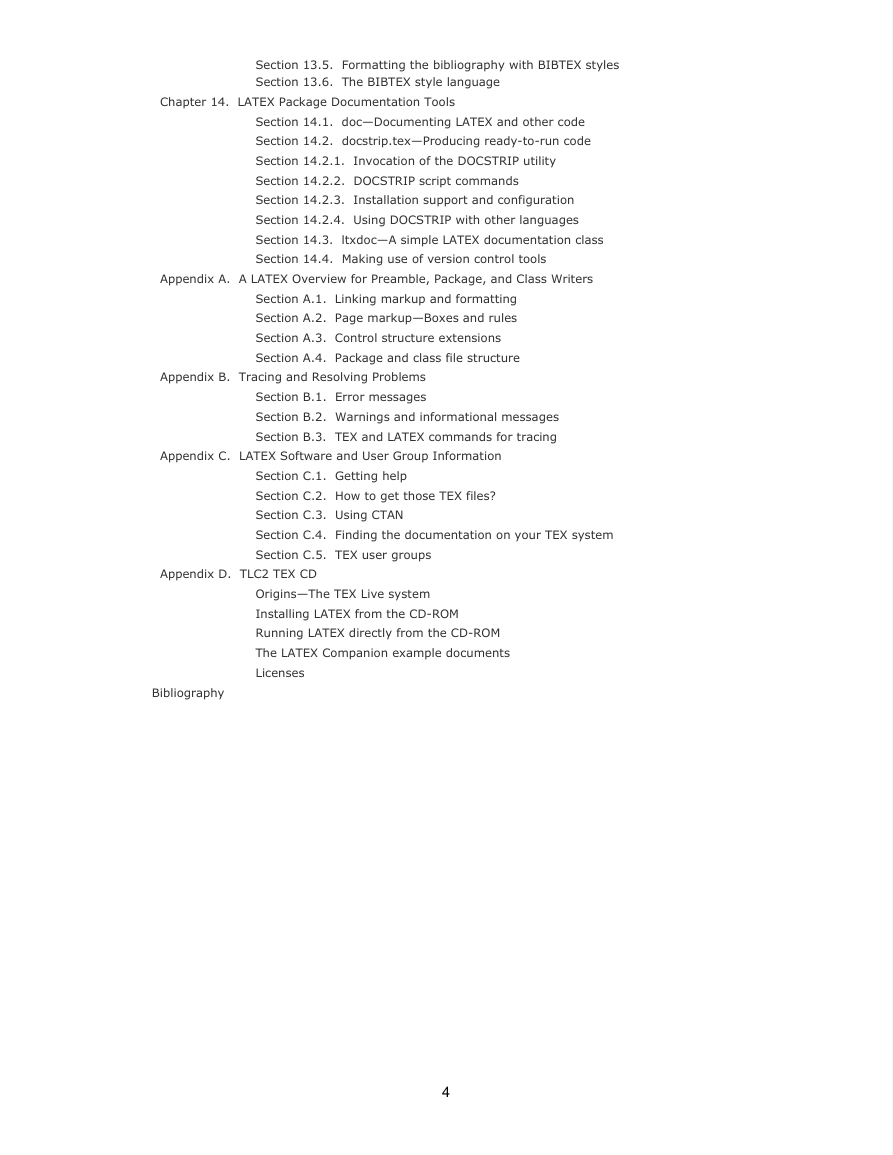
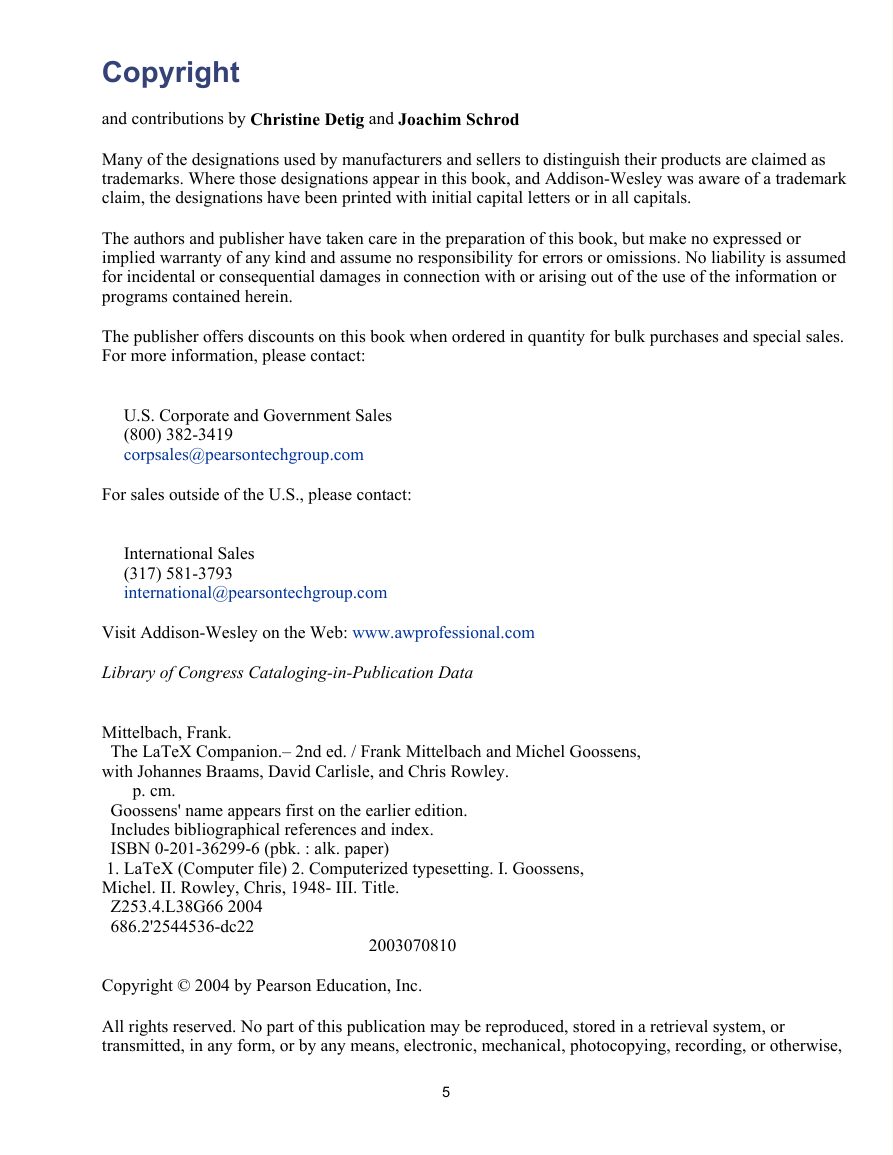
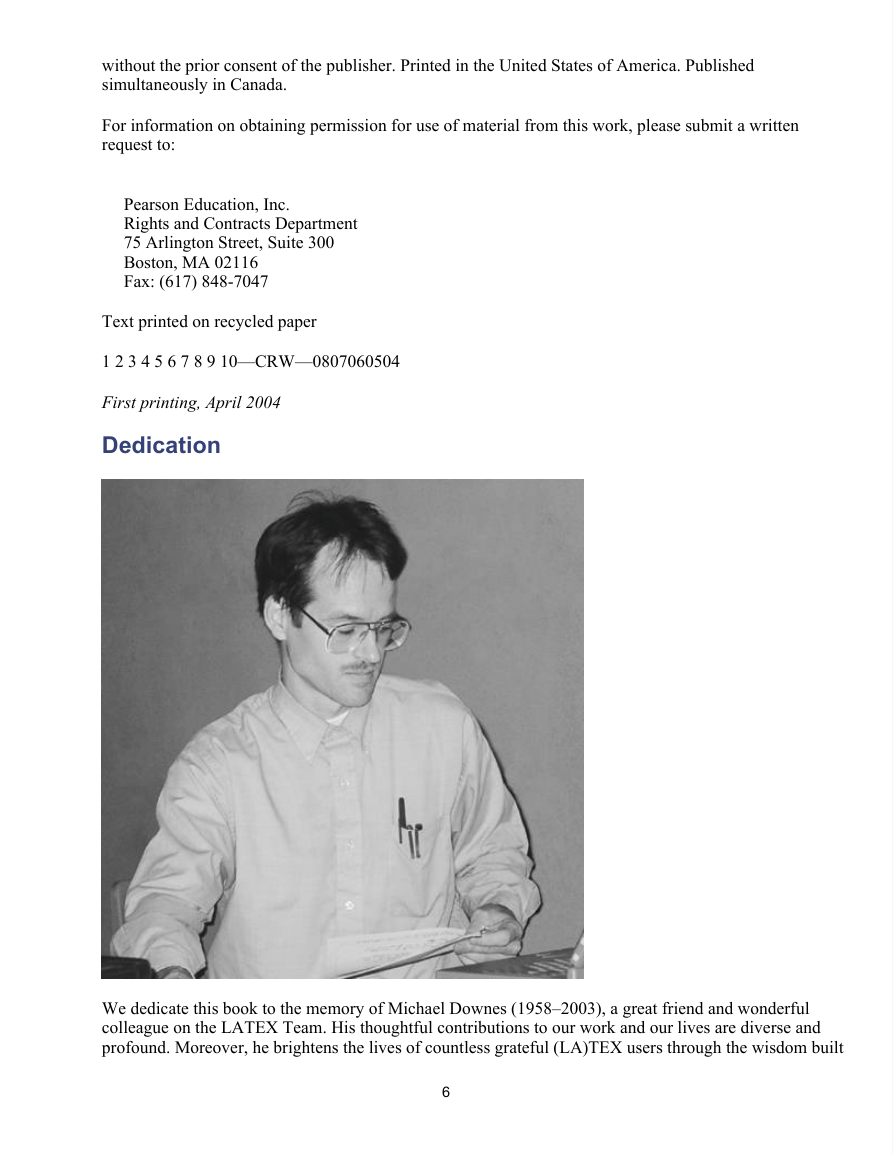
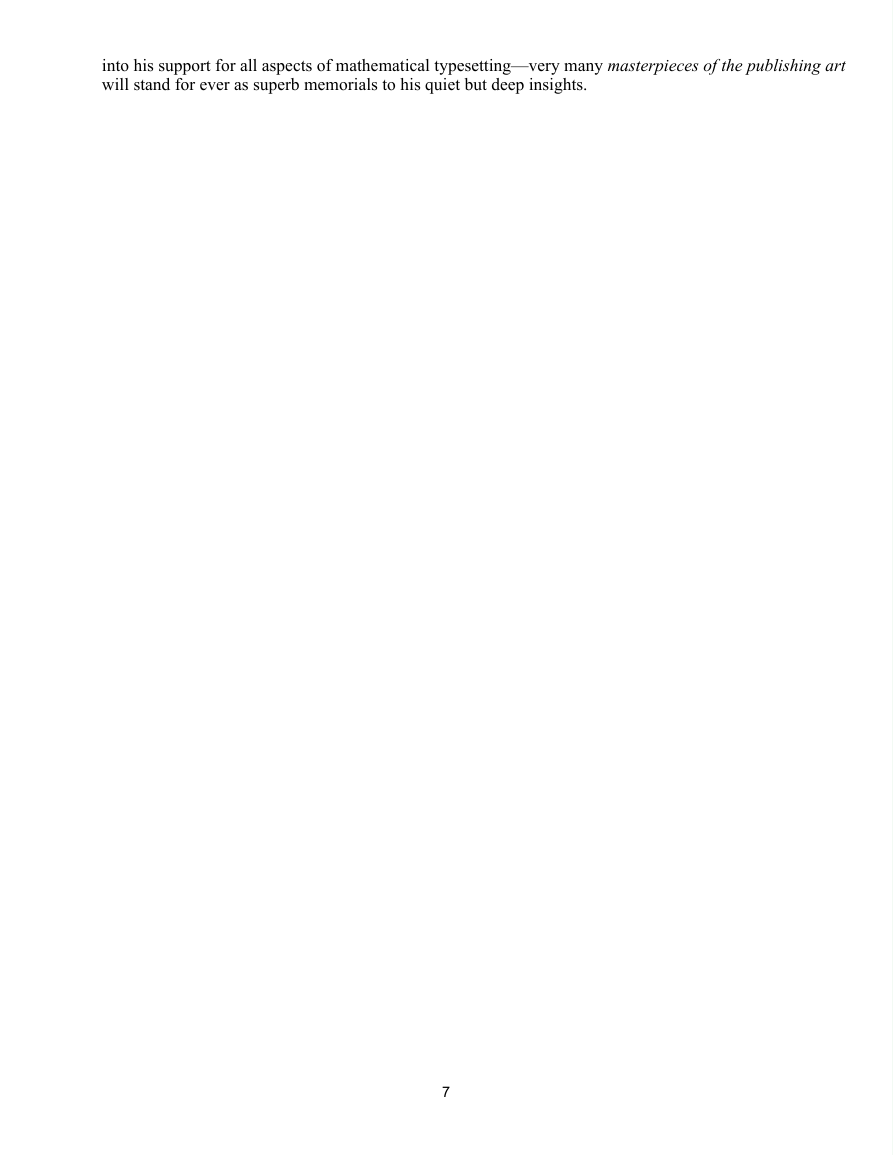
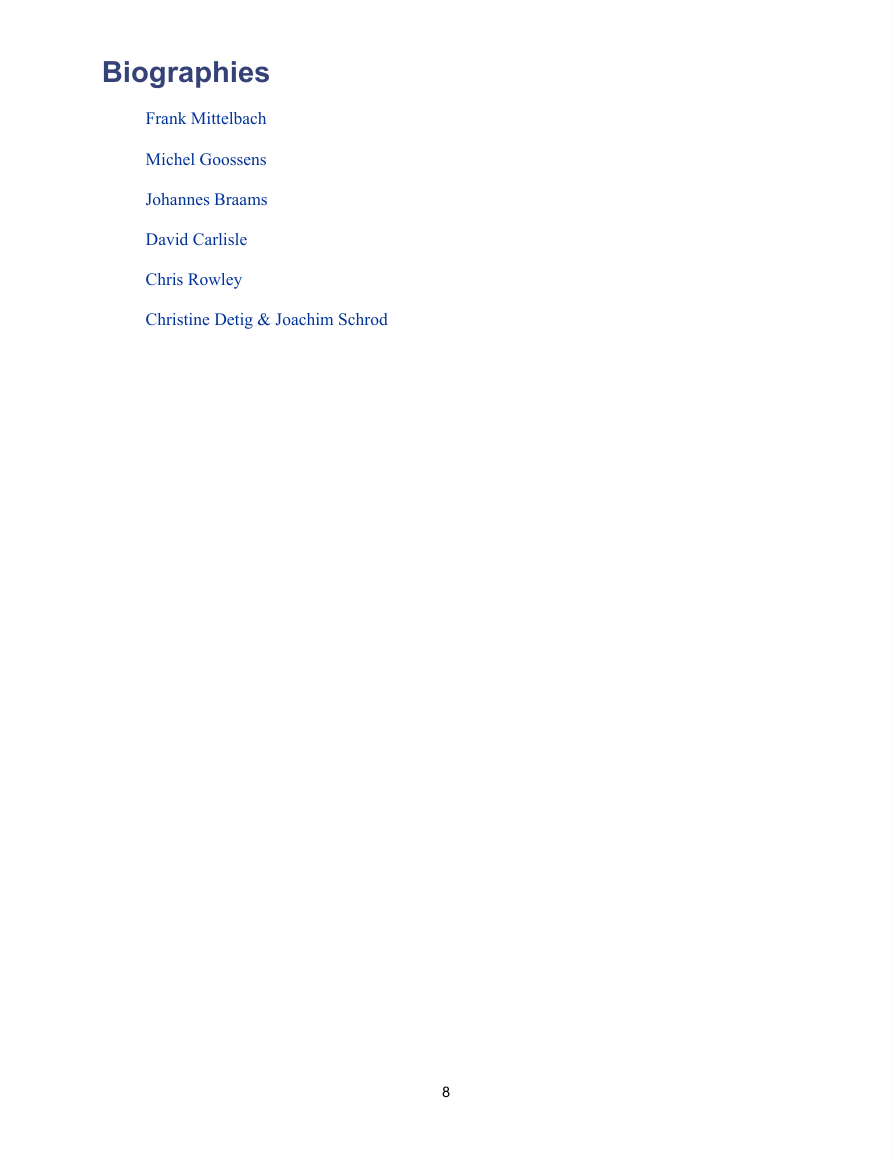








 2023年江西萍乡中考道德与法治真题及答案.doc
2023年江西萍乡中考道德与法治真题及答案.doc 2012年重庆南川中考生物真题及答案.doc
2012年重庆南川中考生物真题及答案.doc 2013年江西师范大学地理学综合及文艺理论基础考研真题.doc
2013年江西师范大学地理学综合及文艺理论基础考研真题.doc 2020年四川甘孜小升初语文真题及答案I卷.doc
2020年四川甘孜小升初语文真题及答案I卷.doc 2020年注册岩土工程师专业基础考试真题及答案.doc
2020年注册岩土工程师专业基础考试真题及答案.doc 2023-2024学年福建省厦门市九年级上学期数学月考试题及答案.doc
2023-2024学年福建省厦门市九年级上学期数学月考试题及答案.doc 2021-2022学年辽宁省沈阳市大东区九年级上学期语文期末试题及答案.doc
2021-2022学年辽宁省沈阳市大东区九年级上学期语文期末试题及答案.doc 2022-2023学年北京东城区初三第一学期物理期末试卷及答案.doc
2022-2023学年北京东城区初三第一学期物理期末试卷及答案.doc 2018上半年江西教师资格初中地理学科知识与教学能力真题及答案.doc
2018上半年江西教师资格初中地理学科知识与教学能力真题及答案.doc 2012年河北国家公务员申论考试真题及答案-省级.doc
2012年河北国家公务员申论考试真题及答案-省级.doc 2020-2021学年江苏省扬州市江都区邵樊片九年级上学期数学第一次质量检测试题及答案.doc
2020-2021学年江苏省扬州市江都区邵樊片九年级上学期数学第一次质量检测试题及答案.doc 2022下半年黑龙江教师资格证中学综合素质真题及答案.doc
2022下半年黑龙江教师资格证中学综合素质真题及答案.doc